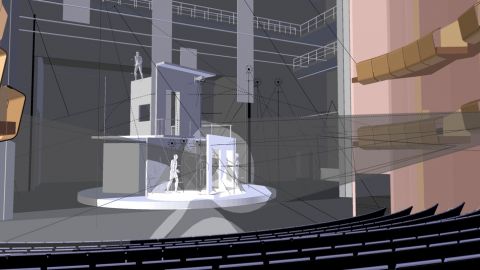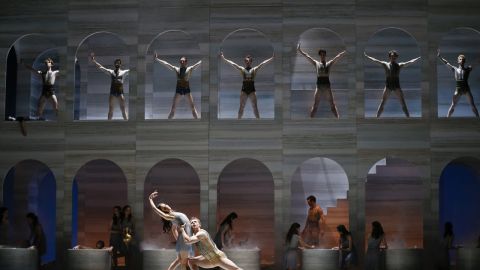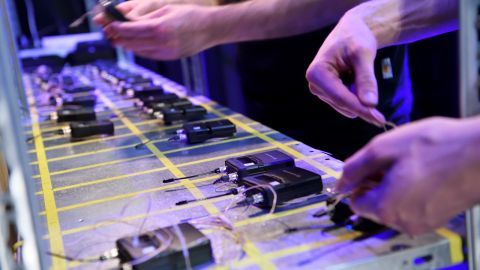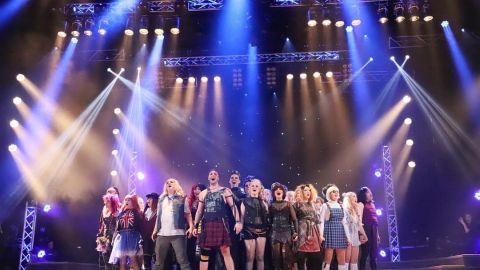Don't Be Blinded by the Light
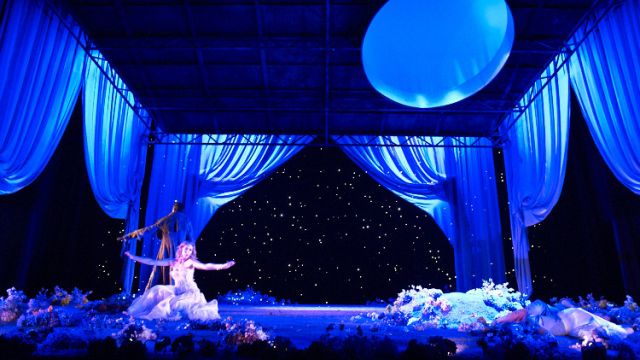
Marcus Pugh from Resolution X gives his tips on ways to get the most out of LED and Moving Lights.
Computer Technology has come a long way in past decades. Who’d have thought 20 years ago we’d all be walking around with 500 times the data of the average home computer in our pockets. Lighting technology changes are just as exciting. But what lights are most suitable for your theatre?
LEDs
Light Emitting Diodes have advanced in the past five years from being that little blinking warning light on a console or a dashboard to a whole new area of lighting products that now outstrip sales of conventional lights for the entertainment market.

The LED technology has many advantages. They are small, energy efficient and cheap to produce. Their size means that you can now have a light source positioned in the tightest spot, making them perfect for set lighting, especially if you’d like a piece of set to change colour. Stripes of LED are a great way to define the edge of a piece of set or stage. The weight of an LED means they can be mounted on drapes to create a star cloth effect, which can add a real ‘wow factor’ when the normally black backdrop is suddenly awash in coloured dots. A star cloth can also add depth to a stage design.
Eye candy is a term often associated with LED lighting, when the light source is visible to the audience and is not about the light hitting a surface or person. An LED Par works well as a backlight when the designer wants the audience to see lots of rich colours changing upstage without those colours washing out the faces of actors.
However, there are some areas where you should avoid using LED, where the traditional methods of lighting still work best. Front light for example. The LED is much brighter than years ago but still does not have the output to throw light from a front of house position (unless you’re willing to pay the big bucks for the newest generation of fixtures).
Colour is another pitfall of the LED, because most are produced with a rich red, green and blue colour, which can work well in a corporate or rock’n’roll setting, but they do not suit the subtle naturalistic tones required for theatre.
Image (top left): LED Star Cloth. Image courtesy of Black Swan State Theatre Company WA and (above right): An example of LED used as backlight from the Camberwell Showtime 2011.
Moving Lights
Moving lights come in a large range of sizes, outputs and effects. The main advantage of moving lights is that they can do the job of many conventional fixtures in a lighting rig with their ability to focus on different positions, change colour and rotate/change gobos. Most, however, have not been designed with theatrical applications as their main function.
Moving lights come in a few different varieties.
There’s wash, which are like colour changing fresnels that move. This means you can create different washes for the stage from one fixture. A great example of this is the Martin Mac TW1, which has been developed with theatre in mind. It has a tungsten bulb, and runs almost silently by eliminating most of the fans, using convection cooling instead. The TW1 also has a palette of in-built colours and colour mixing suited to theatre lighting designs.
Profile or Spot moving lights have a selection of gobos and effects built in. A perfect example of a Spot designed for theatre is the Clay Paky Alpha 700 Profile. These again have an option to run almost silently and have an automated framing shutter system.
Beam Lights are the newest variety of moving light, and, as the name suggests, are a moving light optimised to create a beam that can move and change colour.
While being useful tools, moving lights have their downsides, like noise, colour temperature and taking much longer to program during those precious bump-in days.
While all this new technology opens up many opportunities, don’t be blinded by the light. Things like LED and moving lights have their place in theatre but they are often not as good as the tried and true methods already in place. My advice would be to take care of your most important lighting elements, i.e. front light and washes, with conventional fixtures like Profiles, Fresnels and Pars, then use LEDs for back light and ‘eye candy’ effects, and moving lights for effects.
Originally published in the May / June 2012 edition of Stage Whispers.

